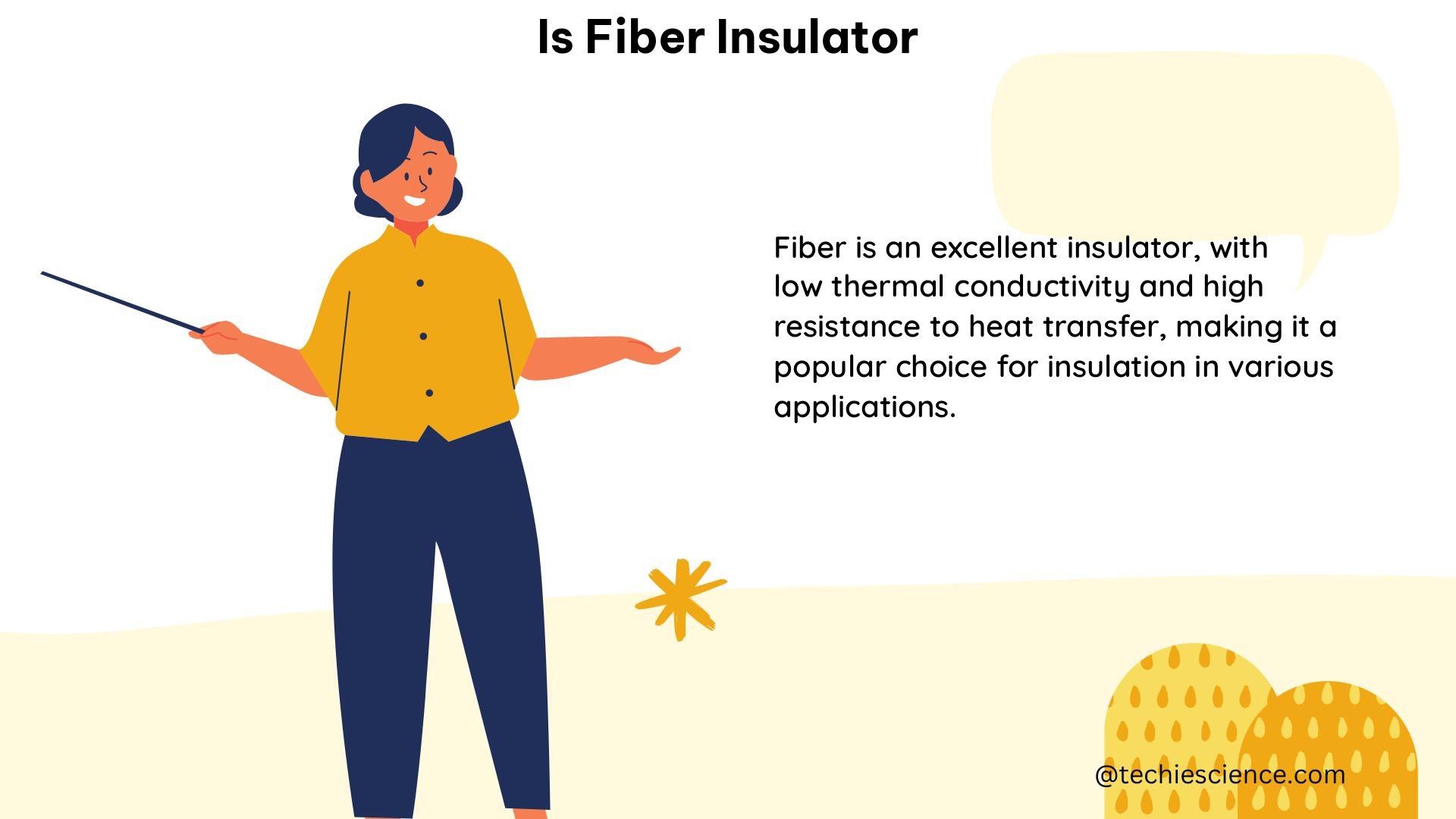Fiber insulation materials, such as ceramic fiber blankets and paper, possess unique thermal properties that are often quantified in terms of R-value or thermal conductivity. Understanding these measurable characteristics is crucial for selecting the appropriate fiber insulator for various applications and environments.
Thermal Properties of Fiber Insulators
R-Value and Thermal Conductivity
The R-value is a numerical representation of a material’s ability to resist heat flow, with higher R-values indicating better insulation performance. For fiber insulators, the R-value is influenced by factors such as material composition, density, and thickness.
The thermal conductivity, or k-value, is another important metric that describes a material’s ability to conduct heat. Ceramic fiber blankets, like CeraTex, exhibit a k-value that varies depending on the material’s density and temperature.
Calculating R-Value for Ceramic Fiber Paper Products
Calculating the R-value for ceramic fiber paper products can be challenging due to the lack of thermal conductivity testing at temperatures more representative of home insulation conditions. This is because the R-value formula assumes a linear relationship between temperature and heat flow, which may not accurately reflect the behavior of ceramic fiber materials.
Example Calculation: CeraTex Ceramic Fiber Blanket
The 8 lb/ft³ density CeraTex ceramic fiber blanket, with a thickness of 1 inch, has an approximate R-value of 2.3. This performance is slightly better than other ceramic fiber blanket brands, demonstrating the importance of considering material-specific thermal properties when selecting insulation products.
Temperature Differential Through Thickness
In addition to R-value and thermal conductivity, the temperature differential through the thickness of a fiber insulator, from the hot face to the cold face, is another important characteristic. This value can help determine the suitability of a fiber insulator for specific temperature ranges and applications.
Measuring Temperature Differential
The temperature differential through the thickness of a fiber insulator can be measured by placing temperature sensors on the hot and cold faces of the material and recording the temperature difference at various temperature ranges.
Dielectric Strength
The dielectric strength of a fiber insulator is a measure of its ability to withstand an electric field without experiencing dielectric breakdown. This property is particularly important for applications where the insulator may be exposed to high-voltage environments, such as in electrical equipment or power transmission systems.
Measuring Dielectric Strength
The dielectric strength of a fiber insulator can be measured by applying an increasing electric field across the material until it experiences breakdown. The voltage at which breakdown occurs is the dielectric strength, typically expressed in units of volts per meter (V/m).
Moisture Absorption Rates
The ability of a fiber insulator to resist moisture absorption is another critical characteristic, as moisture can significantly impact the material’s thermal performance and structural integrity. Measuring the moisture absorption rates of fiber insulators can help determine their suitability for use in damp or humid environments.
Measuring Moisture Absorption
Moisture absorption rates can be measured by exposing a fiber insulator sample to a controlled environment with a specific humidity level and monitoring the change in the sample’s weight over time. This data can be used to calculate the material’s moisture absorption characteristics.
Comparing Fiber Insulators to Other Insulation Products

When selecting an insulation material, it’s important to consider factors beyond just thermal performance. Other important factors to consider include:
- Cost: The overall cost of the insulation material, including the purchase price and installation expenses.
- Availability: The ease of obtaining the insulation material, especially for large-scale projects or in remote locations.
- Ease of Installation: The complexity and time required to install the insulation material, which can impact labor costs and project timelines.
- Fire Resistance: The ability of the insulation material to resist ignition and slow the spread of fire, which is crucial for safety considerations.
By evaluating these factors in addition to the thermal properties of fiber insulators, you can make an informed decision on the most suitable insulation solution for your specific application.
Conclusion
Fiber insulation materials, such as ceramic fiber blankets and paper, offer unique thermal properties that can be quantified through various measurements, including R-value, thermal conductivity, temperature differential, dielectric strength, and moisture absorption rates. Understanding these measurable characteristics is essential for selecting the appropriate fiber insulator for specific applications and environments.
When comparing fiber insulators to other insulation products, it’s important to consider factors beyond just thermal performance, such as cost, availability, ease of installation, and fire resistance. By evaluating all these factors, you can make an informed decision and ensure the optimal insulation solution for your needs.
Reference:
- Thermal Conductivity and Thermal Diffusivity of Ceramic Fiber Insulation Materials
- Insulation R-Value and How it Applies to Ceramic Fiber Blanket and Paper
- Grids that Communicate
Hi, I’m Akshita Mapari. I have done M.Sc. in Physics. I have worked on projects like Numerical modeling of winds and waves during cyclone, Physics of toys and mechanized thrill machines in amusement park based on Classical Mechanics. I have pursued a course on Arduino and have accomplished some mini projects on Arduino UNO. I always like to explore new zones in the field of science. I personally believe that learning is more enthusiastic when learnt with creativity. Apart from this, I like to read, travel, strumming on guitar, identifying rocks and strata, photography and playing chess.